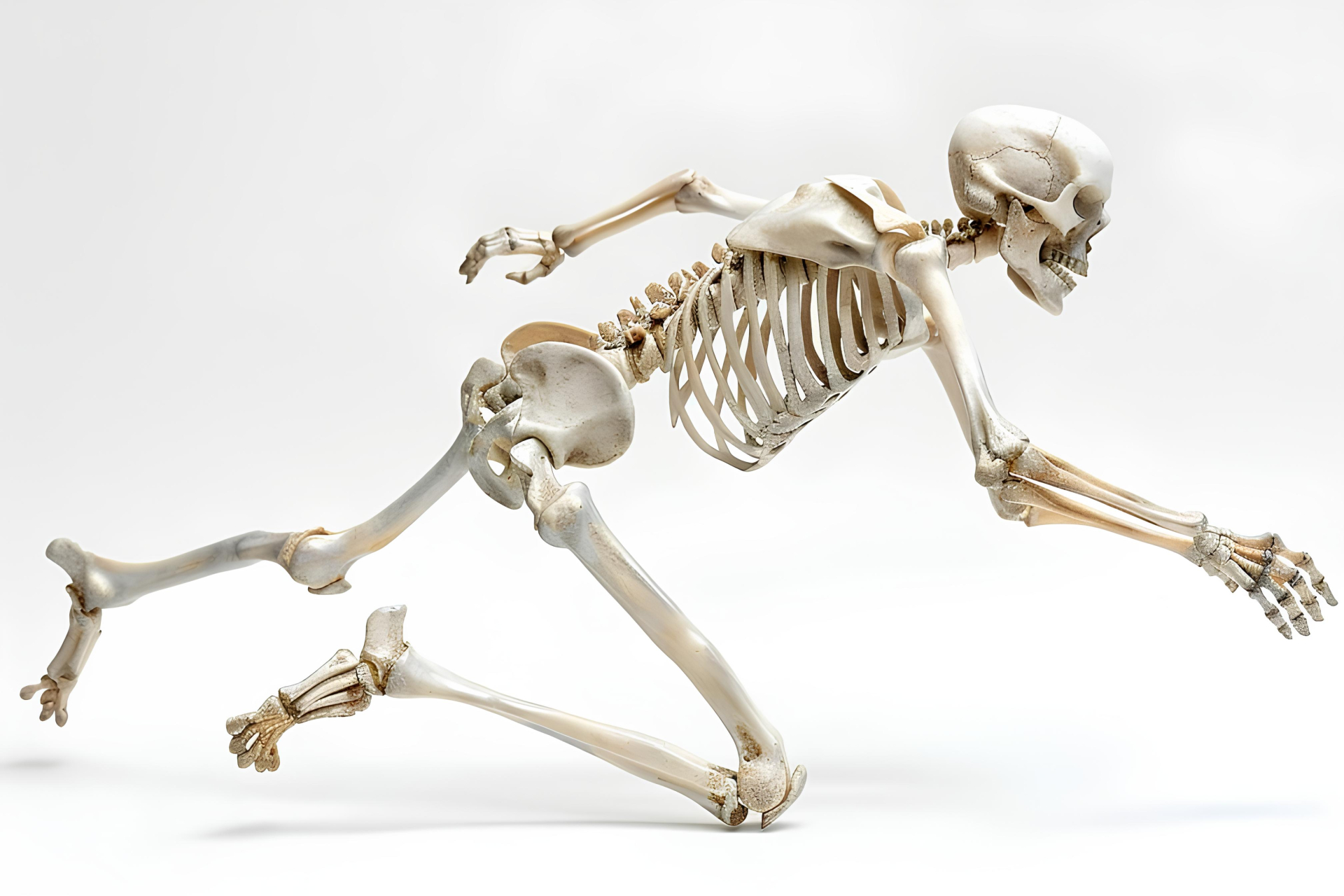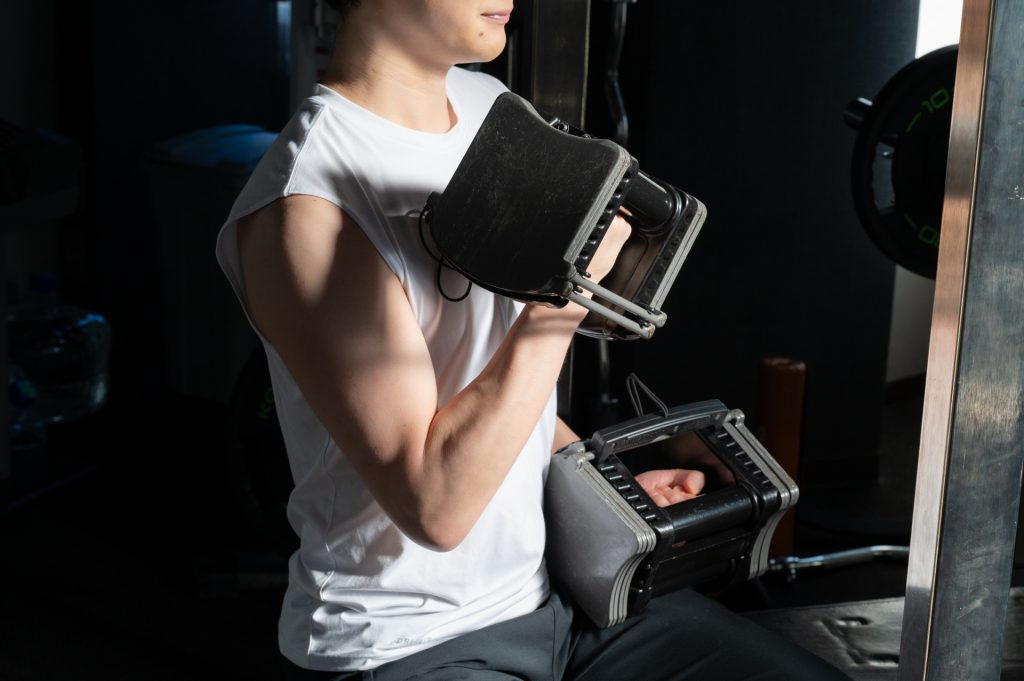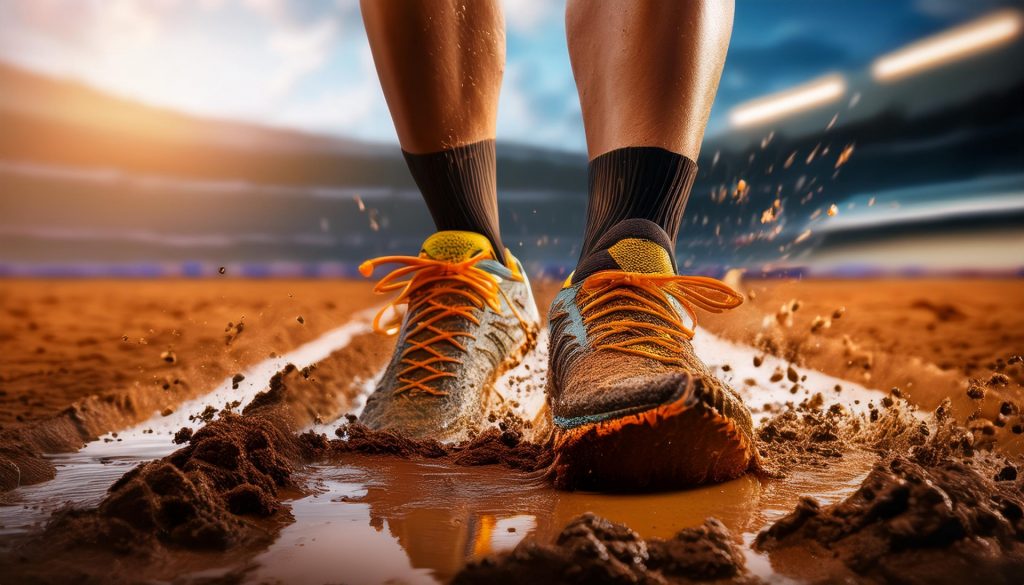
Muscle development and the effects of exercise vary from person to person. One of the major factors that causes these differences is “genes.” The rate of skeletal muscle growth, muscle strength improvement, and endurance are determined by the interaction of genetic and environmental factors. Recent research has revealed that certain genes have a significant impact on muscle development and training adaptation.
This article provides a detailed explanation of the main genes involved in skeletal muscle development, the differences in muscle types, how to optimize training using genetic information, and the latest research trends . By learning about a scientifically based approach, you will be able to develop a more efficient strategy for improving muscle strength .
1. The relationship between skeletal muscle development and genetics
Skeletal muscle growth involves muscle fiber type, protein synthesis, and muscle contraction mechanisms, and research has shown that these functions are largely determined by genetic factors ( Timmons JA, 2010 ).
The main factors that influence skeletal muscle development are:
- Muscle fiber type (fast twitch vs. slow twitch)
- Muscle protein synthesis ability
- Growth hormone and testosterone levels
- Oxygen supply capacity (capillary density and number of mitochondria)
In particular, the ratio of fast-twitch and slow-twitch muscles is largely determined by genetic factors and is said to also affect training adaptability .
2. Key genes involved in skeletal muscle development

① ACTN3 gene (fast-twitch muscle fibers and explosive power)
**ACTN3 (alpha-actinin-3)** is a gene involved in the development of fast-twitch muscle fibers (Type II) and is primarily found in sprinters and power athletes ( MacArthur DG, 2007 ).
- People with R type (RR type) : Fast-twitch muscles tend to develop easily, and have high explosive power. Suitable for sprinting and weightlifting.
- Type X (XX type) : Fast twitch muscle fibers develop slowly, and have high endurance. Suitable for marathons and long distances.
Training optimization with ACTN3 gene
- RR type : short-term, high-intensity training (sprints, plyometrics, weight training)
- XX blood type : Endurance training (long-term aerobic exercise, interval training)
② MSTN gene (suppresses myostatin and muscle growth)
Myostatin is a protein that inhibits muscle growth, and reduced myostatin secretion due to mutations in the MSTN gene promotes muscle development ( Schuelke M, 2004 ).
- People with low myostatin secretion : Easier muscle hypertrophy
- People with high myostatin secretion : Muscle growth is easily suppressed
Optimizing your training
- People with low myostatin secretion → Strength training is more effective, so muscle hypertrophy is easier with moderate loads.
- People with high myostatin secretion need more intense training (8-12 heavy weight training sessions)
3) ACE gene (stamina and muscle endurance)
The **ACE gene (angiotensin-converting enzyme gene)** is known to affect endurance, and certain variants are more common in endurance athletes ( Montgomery HE, 1998 ).
- Type I (Type II) : Excellent endurance, suitable for marathons and cycling
- People with blood type D (DD blood type) : Excellent muscle strength and explosive power, suitable for power sports
ACE Genes for Training Optimization
- Type II : Long-term low-intensity training (marathons, cycling)
- DD type people -> Short, high intensity training (sprints, weight training)
3. Optimizing training using genetic information

① Strategies to maximize muscle hypertrophy
✅ People with ACTN3 RR type should focus on short-term, high-intensity training.
✅ If there is a mutation in the MSTN gene, supplements that suppress myostatin (HMB, creatine) are effective.
✅ People with ACE DD type should utilize interval training to supplement their endurance.
② Strategies to improve endurance
✅ For people with ACE type II, low-intensity, long-term exercise is effective.
✅ For people with ACTN3 type XX, focus on training to build muscle endurance.
✅ For people who are strongly affected by MSTN, light resistance training after aerobic exercise is effective.
3) Nutritional intake based on genetic information
✅For those with a high fast-twitch muscle profile, focus on a high protein diet (chicken breast, eggs, protein)
✅For those with endurance, optimize your carbohydrate intake (whole wheat, brown rice, oatmeal)
✅Increase omega-3 fatty acids (fish, nuts) to increase muscle synthesis
4. Advances in genetic research and future training
In recent years, the possibility of muscle building using genome editing technology (CRISPR) has been researched. In the future, it is predicted that treatments that suppress myostatin and individually optimized training programs based on genetic information will be developed .
Additionally, systems are being developed that integrate wearable devices with genetic information to suggest optimal training in real time , which will enable more effective training while making the most of genetic information.
By utilizing genetic information, it is possible to select the training method and nutrition strategy that is best suited to each individual’s physical constitution, leading to more efficient muscle gains . It is expected that further advances in genetic research will enable more individually optimized approaches.
5. Genetic-based optimization of strength training
Using your genetic information can help you maximize the benefits of strength training and develop muscles more efficiently. Here we will take a closer look at training strategies tailored to your individual genetics .
① Training strategies for each muscle fiber type
1. Fast-twitch predominant type (ACTN3 RR type)
Fast-twitch muscle fibers are best suited for short, high-intensity exercise and are specialized for generating explosive power . They are commonly found in sprinters and weightlifters.
Recommended training :
- Short, heavy resistance training
- Example: Deadlift, squat, bench press (heavy weight set with 6 reps or less per set)
- Sprint training
- Example: 100m dash, plyometrics (box jumps)
- Take longer rest periods
- Fast-twitch muscles provide explosive power, but they recover slowly, so rest 2-3 minutes between sets.
2. Slow-twitch predominant type (ACTN3 XX type)
Slow-twitch muscle fibers are excellent for endurance and are adapted to long-term exercise. They are common in long-distance runners and triathletes.
Recommended training :
- Long-term endurance training
- Examples: marathon, cycling, swimming
- Light weight, high repetition resistance training
- Example: Squats or bench presses at high repetitions of 12-20
- Interval training
- Example: HIIT (High Intensity Interval Training) – 30 seconds of running + 30 seconds of walking
② How to maximize muscle hypertrophy (increase in muscle mass)

Muscle hypertrophy is caused by an increase in muscle fibers and activation of muscle protein synthesis . There are genetic types that are more likely to build muscle than others, and training that suits the genetic type is necessary.
1. MSTN (myostatin) low secretion type
Myostatin is a protein that inhibits muscle growth, and mutations in this gene promote muscle hypertrophy.
Recommended training :
- Low rep, heavy weight training
- Example: Squats, bench press, and deadlifts done at low reps of 3-6
- Optimize your protein intake
- Consume 20-30g of protein within 30 minutes of training to stimulate muscle protein synthesis
- Promotes the secretion of growth hormone, improving sleep quality
- Example: Avoid blue light one hour before bed and take magnesium
2. High secretion of MSTN (myostatin)
People with high levels of myostatin tend to have a harder time building muscle, which is why they need to train harder to promote muscle hypertrophy .
Recommended training :
- Use drop sets and supersets
- Example: Bench press (heavy weight, 6 reps) → Change to light weight and add 10 more reps
- Using HMB and Creatine
- HMB (β-hydroxyβ-methylbutyric acid) inhibits muscle breakdown and promotes muscle hypertrophy
- Emphasis on the principle of overload
- Focus on “progressive overload” by increasing the weight each week
3) Training to improve muscle strength and power
Nervous system adaptation is also an important factor in improving muscle strength. There are people who are genetically more likely to develop muscle strength and people who are good at adapting their nervous systems.
1. ACE Gene (Strength vs. Endurance)
- DD type (strength and power type): Suitable for short-term, high-intensity training
- Type II (endurance type): Good at long-term endurance training
ACE Training for DD type :
- Speed Training
- Example: sled push, sprint drill
- Low rep, heavy weight training
- Example: Clean and Jerk, Snatch
ACE II Training :
- Aerobic exercise + light resistance training
- Example: Running + high reps with light weights
4. Nutritional strategies based on genetic information
Proper nutrition based on your genetic type is essential to maximize muscle development .
1. Genotypes that require high protein intake
- People with FTO gene mutations (low metabolism, prone to gaining body fat)
- A high-protein, low-fat diet is appropriate (chicken breast, fish, egg whites)
- Utilize carb cycling (cyclical carbohydrate intake)
- ACTN3 RR type (fast-twitch muscle dominant, explosive power)
- Creatine intake is effective (enhancing explosive power)
2. Nutritional strategies for endurance
- ACE type II (for endurance athletes)
- Optimize your carbohydrate intake (focus on low GI foods)
- Actively take in omega-3 fatty acids (reduces inflammation and helps improve endurance)
6. The future of genetic testing and the latest research trends

In recent years, individually optimized training using AI and wearable devices has been attracting attention.
① Personalized training using genetic information and AI
- Combining genetic data with fitness trackers to suggest optimal training plans in real time
- Analyzes stress levels and recovery levels and automatically adjusts training load
② Possibility of muscle enhancement using gene editing technology (CRISPR)
- Research underway to promote muscle growth by modifying the myostatin gene
- Ethical discussions on improving future sports performance
By utilizing genetic information, it is possible to select the training method and nutrition strategy that is best suited to each individual’s physical constitution, making it possible to improve muscle strength more efficiently . Adopting a science-based approach and making the most of your genetic characteristics will be the key to dramatically improving your training results.
7. Genetic recovery strategies
To maximize the results of strength and endurance training, an appropriate recovery strategy is essential. Using genetic information, it is possible to individually optimize recovery rates and risk of muscle damage .
① The relationship between genes and muscle recovery ability
Genetic differences affect muscle repair speed and inflammatory response . In particular, the following genes are known to be involved in recovery and recovery from fatigue after training:
1. IL6 gene (inflammation and recovery speed)
The IL6 (interleukin-6) gene is involved in post-exercise inflammatory responses and muscle repair ( Fischer CP, 2006 ).
- High IL6 expression type → Muscle inflammation occurs easily and recovery takes time
- Low IL6 expression type → Less inflammation, faster recovery
Recovery strategy : ✅High expression type → Consume anti-inflammatory foods (turmeric, ginger, omega-3 fatty acids) to reduce muscle inflammation
✅Low expression type → Faster recovery, allowing for high-frequency training in a short period of time
2. CKM gene (creatine kinase and muscle damage)
The CKM (creatine kinase) gene is believed to influence the degree of muscle damage and the speed of recovery ( Brancaccio P, 2007 ).
- High CKM expression type → Susceptible to muscle damage, takes longer to recover
- Low CKM expression type → Less muscle damage, faster recovery
Recovery strategy : ✅High expression type → Take BCAA (branched-chain amino acids) and HMB after training to prevent muscle breakdown
✅Low expression type → Use ice baths and low temperature therapy to reduce muscle fatigue the next day
② Optimizing recovery by gene type

Depending on whether you’re genetically predisposed to muscle recovery or not , different recovery plans can help you maximise the benefits of your training.
1. Fast recovery type (low IL6 expression & low CKM expression)
- Easy to adapt to training 5-6 times a week
- High-frequency training is possible (e.g. high-intensity training for two consecutive days)
- Reduce recovery time and use active stretching and massage
2. Slow recovery type (high IL6 expression & high CKM expression)
- Training about four times a week with plenty of rest days is appropriate.
- Utilizing EAA (essential amino acids) to promote muscle synthesis
- Stress management is important (the stress hormone cortisol inhibits muscle recovery, so incorporate meditation and breathing exercises)
3) The relationship between sleep and recovery based on genetic information
Sleep is one of the most important factors in muscle recovery, and different genes influence the quality and amount of sleep you need , so tailoring your sleep strategy to your genetics can be effective.
1. CLOCK gene (circadian rhythm and sleep)
The CLOCK gene is involved in regulating the body’s internal clock and determines sleep quality and tendencies to be morning or evening types ( Takahashi JS, 2017 ).
- Morning type (with certain CLOCK mutations) → Morning training is suitable
- Night type (no CLOCK mutation) → Night training is effective
Strategies to improve sleep : ✅ Morning people → Avoid caffeine before going to bed and adjust your body rhythm by exposing yourself to morning light
✅ Night people → Cool down properly after evening training and allow your parasympathetic nervous system to take over
2. BDNF gene (relationship between brain recovery and sleep)
Brain-derived neurotrophic factor (BDNF) is involved in repairing nerve cells and stress resistance. People with low BDNF expression tend to be more susceptible to stress and have poorer sleep quality ( Rothman SM, 2012 ).
Sleep strategies : ✅ For people with low BDNF expression → Take magnesium before bedtime to enhance relaxation
✅ For people with high BDNF expression → Use low-pitched music or white noise to promote deep sleep
4. Nutritional strategies to promote recovery

Proper nutrition is essential to speed up muscle recovery . Use your genetic information to tailor your nutrition strategy to your speed of recovery and the extent of muscle damage.
1. For people at high risk of inflammation (IL6 high expression type)
✅ Suppress inflammation by taking in **Omega-3 fatty acids (EPA and DHA)**
✅ Enhance antioxidant effects by utilizing **Polyphenols (blueberries, cacao)**
2. For people at high risk of muscle damage (CKM high expression type)
✅ Optimize creatine intake (5g per day will help recover from muscle fatigue)
✅ Take BCAA before and after exercise to prevent muscle breakdown
3. For people who want to improve their sleep quality (CLOCK & BDNF related)
✅ Consume foods containing tryptophan (a precursor of serotonin)
(bananas, dairy products) ✅ Consume GABA (an amino acid that has a relaxing effect) (fermented foods, green tea)
By utilizing genetic information, it is possible to optimize muscle recovery and sleep quality and maximize the effect of training . Understanding your genetic characteristics and incorporating recovery strategies based on them can lead to more efficient muscle growth and improved long-term performance.
8. Personalized optimization of training using genetic information
Training optimization based on genetic information is an important means of not only improving muscle strength, but also reducing the risk of injury and achieving sustained improvements in performance . Understanding genetic factors and building a training menu based on them can help you develop a more efficient fitness strategy.
1. Risk of injury and genetic factors
It is known that the risk of training-related ligament damage and fractures is also influenced by genes . Certain gene polymorphisms affect joint flexibility and collagen strength, and thus influence the incidence of sports injuries.
1. COL1A1 gene (ligament strength and flexibility)
COL1A1 (type I collagen gene) is thought to be involved in the strength of ligaments and tendons and determine the risk of sports injuries ( Mannion AF, 2008 ).
- People with risk type (TT type) → have soft ligaments and are at high risk of sprains and ligament injuries
- Non-risk type (CC type) people have strong ligaments and high joint stability
✅Measures for risk-takers :
- Don’t overstretch, but strengthen your joints with strength training
- Incorporates core training to improve knee and shoulder stability
- Taking collagen supplements (gelatin, vitamin C) to promote tissue repair
2. GDF5 gene (joint health and range of motion)
The GDF5 (growth differentiation factor 5) gene is involved in joint formation and cartilage maintenance , and influences osteoarthritis and differences in range of joint motion ( Chapman K, 2008 ).
- People with risk mutations in GDF5 have limited range of motion in their joints and are prone to joint pain caused by exercise.
- Non-risk type people : Highly flexible and have a wide range of movement
✅Measures for risk-takers :
- Warm up thoroughly and ensure your joints are warm before starting exercise.
- Incorporate foam rolling and dynamic stretching to improve joint movement
- Consume anti-inflammatory foods (turmeric, omega-3 fatty acids) to maintain healthy joints
② Improving sports performance using genetic information

Genes influence not only muscle strength and endurance, but also motor nerve development and explosive power . By utilizing these characteristics, it is possible to aim for improved sports performance.
1. BDNF gene (motor learning and neural adaptation)
The BDNF (brain-derived neurotrophic factor) gene is involved in motor learning and neural adaptation, influencing the speed at which new movements are mastered ( Hopkins ME, 2012 ).
- People with high BDNF expression → Quicker learning of exercise and smoother adaptation to training
- People with low BDNF expression take longer to learn new motor skills
✅ Solutions for people with low BDNF expression :
- Incorporate a lot of drills that strengthen the nervous system (coordination training, balance exercises)
- Moderate aerobic exercise (running, cycling) promotes the secretion of BDNF
- Taking DHA (omega-3) improves the plasticity of nerve cells
2. SLC6A4 gene (stress resistance and mental control during a match)
The SLC6A4 gene controls the transport of serotonin and affects stress resistance and concentration ( Hariri AR, 2002 ).
- People with risk type (S type) tend to feel stressed in pressured situations.
- Non-risk type (L type) people are mentally stable and can withstand pressure during a match.
✅Measures for risk-takers :
- Making mindfulness meditation and breathing exercises a habit to control pre-match nervousness
- Eat foods rich in tryptophan (nuts, bananas) to stimulate the secretion of serotonin.
- Actively incorporate match simulations and mental training to get used to the pressure
3) The future of genetic information and personalized training

In recent years, the development of “personalized training programs” that combine AI technology and genetic data has progressed.
1. AI-based genetic data analysis
- Combining genetic testing and exercise history to create an individually optimized training program
- Link with wearable devices to adjust exercise intensity and recovery in real time
2. The potential of gene editing technology
- Research underway to improve muscle strength using CRISPR technology
- In the future, treatments may be developed to strengthen muscles and endurance at the genetic level.
By utilizing genetic information, it is possible to reduce the risk of injury, maximize muscle strength and endurance, and increase stress resistance . With the latest research and technological developments, it is expected that even more advanced personalized training will become possible in the future.
By adopting an evidence-based approach and implementing a training strategy that optimizes your genetic makeup, you can improve your fitness and health.
summary
By utilizing genetic information, it is possible to improve muscle strength and endurance, optimize recovery, manage injury risk, and improve sports performance . Genes such as ACTN3, MSTN, ACE, and COL1A1 are known to affect muscle fiber type and recovery ability, and more efficient results can be obtained by matching training and nutrition strategies to genetic characteristics. Advances in AI and gene editing technology will enable even more precise individual optimization in the future.


